 Jam, Jelly & Preserve Recipes U NIQUELY S WEET & S AVOURY J AM , J ELLY & P RESERVE R ECIPES By Savour Press Copyright by Wentworth Publishing House All rights reserved Published by Savour Press, a DBA of Wentworth Publishing House Lets get it started! Welcome to Savour. Like everyone who wants to cook up the best dishes to please picky eaters in your home, we sometimes resort to buying readymade food items that we can reheat or microwave when the need arises. But the prices of precooked foods keep on increasing, and you are unsure if they are prepared in a clean kitchen. Your familys health is at stake, why not go back to the basic, and enjoy cooking to the fullest. Our mantra is to teach you the basics of cooking with whatever methods that you can prepare healthy and delicious menus for your family and for special occasions. This is why we have come up with this cookbook filled with our collection of 40 best jam, jelly, and preserve recipes for you to start with, so that your dining habits will be memorable and enjoyable.
Jam, Jelly & Preserve Recipes U NIQUELY S WEET & S AVOURY J AM , J ELLY & P RESERVE R ECIPES By Savour Press Copyright by Wentworth Publishing House All rights reserved Published by Savour Press, a DBA of Wentworth Publishing House Lets get it started! Welcome to Savour. Like everyone who wants to cook up the best dishes to please picky eaters in your home, we sometimes resort to buying readymade food items that we can reheat or microwave when the need arises. But the prices of precooked foods keep on increasing, and you are unsure if they are prepared in a clean kitchen. Your familys health is at stake, why not go back to the basic, and enjoy cooking to the fullest. Our mantra is to teach you the basics of cooking with whatever methods that you can prepare healthy and delicious menus for your family and for special occasions. This is why we have come up with this cookbook filled with our collection of 40 best jam, jelly, and preserve recipes for you to start with, so that your dining habits will be memorable and enjoyable.
Cooking should motivate you in doing the best for your family and loved ones. So, why buy restaurant-bought dishes, when you can prepare them in the comfort of your humble home? About This Book We do love sweets because they are pleasing to our taste buds, right? One of the sweet treats that make our breakfast, brunch or snacks an enjoyable experience is to spread our bread, French toast, bagels, waffles or cake with jam, jelly, fruit preserves, butter, curd, compote and among others. This is where Savour wants to do, to share with you our jam, jelly, and preserve recipes to preserve the fruit in season for future use, make them for your home consumption, or as a gift-giving idea for your friends and loved ones. These jam, jelly, and preserve recipes come in a variety of forms to avoid monotony during mealtime. Aside from the fruit in season, most of our ingredients consist of fruit pectin in powder or liquid form if you want the spread less sugary; and then we use sugar, orange, lime or lemon zests and juices; almond extracts, and among others. Do take note that the method of preparation is almost similar, like cooking the ingredients in a Dutch oven or pulse them in a food processor and boil to full rolling boil, boil, stir, add another ingredient, return to full rolling boil, boil, stir and then remove from heat.
After this, skim off foam, ladle hot mixture into sterilized hot pint jars with inch headspace, remove air bubbles, wipe rims and keep on reading. Lets get ready to have a fun time!  VISIT US AT www.savourypress.co m Also, by the editors at Savour Presss kitchen The Chili Cookbook The Quiche Cookbook Indian Instant Pot Cookbook The Cajun and Creole Cookbook The Grill Cookbook The Burger Book The Ultimate Appetizers Cookbook The West African Cookbook Korean Seoul Cookbook The Cast Iron Cookbook The Holiday Cookbook The Baking Book The Crepe Cookbook JOIN THE SAVOUR PRESSS READERS CLUB AND RECEIVE A FREE COOKBOOK! JUST STAY UNTIL THE END OF THE BOOK AND CLICK ON THE BOOK OR LINK!
VISIT US AT www.savourypress.co m Also, by the editors at Savour Presss kitchen The Chili Cookbook The Quiche Cookbook Indian Instant Pot Cookbook The Cajun and Creole Cookbook The Grill Cookbook The Burger Book The Ultimate Appetizers Cookbook The West African Cookbook Korean Seoul Cookbook The Cast Iron Cookbook The Holiday Cookbook The Baking Book The Crepe Cookbook JOIN THE SAVOUR PRESSS READERS CLUB AND RECEIVE A FREE COOKBOOK! JUST STAY UNTIL THE END OF THE BOOK AND CLICK ON THE BOOK OR LINK!  Copyright 2018 by Savour Press All rights reserved. No part of this publication may be reproduced, distributed, or transmitted in any form or by any means, including photocopying, recording, or other electronic or mechanical methods, without the prior written permission of the publisher, except in the case of brief quotations embodied in critical reviews and certain other noncommercial uses permitted by copyright law. Contents
Copyright 2018 by Savour Press All rights reserved. No part of this publication may be reproduced, distributed, or transmitted in any form or by any means, including photocopying, recording, or other electronic or mechanical methods, without the prior written permission of the publisher, except in the case of brief quotations embodied in critical reviews and certain other noncommercial uses permitted by copyright law. Contents
Introduction Jam, jelly, marmalade, preserves, butter, etc. gives life to pastries, breads, waffles and cakes. They are not only sweet and delicious, they are healthy too, as they are made of fruits, like raspberries, blueberries, strawberries, orange, lemon, pear, apple, rhubarb and a host of fresh or frozen fruits.
They are also easy to prepare, as the preparation could take you ten to fifteen minutes and cooking time could last for a few minutes. Do remember that the processing time for sterilizing the filled jars is 1,000 feet or less altitude and add one minute to the processing time for an additional altitude of 1,000 feet. This may sound confusing to you, but as you keep on reading our collection of the 40 best spread recipes, you will learn the techniques later. The nutritional information is based on two tablespoons. Enjoy! A JAM PACKED VOCABULARY Lets get familiar with all the different categories of in terms of preserving. Below you will find a list along with some definitions so you know what is a jam, jelly and or marmalade! JAM- created from thinly cut fruit and made with sugar until the right amount of thickness is created Jelly- the key here is pectinit should be sweet clear and semisolid.
Conserve -thick and chewy this contains typically dried fruits and nuts. Marmalade -Paddington might come to mind and for good reason marmalade is a bright and citrusy spread that wows the tastebuds! Preserves -chunks of you guessed it fruit! Steeped in syrup or jelly! The ART OF CANNING We need to talk about pH The pH scale goes from 0 to 14 with 0 being the most basic or least acidic and 14 being the most acidic. Jellys and Jams typically have a pH of 4.6 or lower and can be safely processed in boiling water. Adding a little bit of lemon juice helps the pectin gel as it should. However, if your fruit and or vegetable has a starting pH above 4.6 it cannot be processed until the pH is lowered to 4.6 or below. So, to lower the pH just add in some bottled lime or lemon juice to your fruit and then measure the pH.
Perhaps your wondering why pH matters. Well if the pH is above 4.6 it can be unsafe to eat any jams or jellys made thereof as bacteria thrives in a sealed jar at those low acid pH levels. Also using bottled lemon or lime juice is safest as it is often the most consistent and tested product. HOW DO I MEASURE THE pH ? We are sure by now you are probably wondering how to measure the pH to ensure the safety of these procedures. Rest assured these recipes have been kitchen tested and are below pH 4.6 CANNING! Earlier we mentioned altitude and canning. Well that is because as your altitude increases the boiling point will decrease.
So therefore, at higher elevations the process it longer in the boiling water canner. Below is a list of sea level ranges and the additional minutes to be added to the processing time.
| 0-1000 ft | |
| 1,001-3,000 ft | 5 minutes added |
| 3,001-6,000 ft | 10 minutes added |
| 6,001-8,000ft | 15 minutes added |
| 8,001-10,000ft | 20 minutes added |
| 10,001+ | 25 minutes added |
THE general CANNING STEPS
PLACE THE JARS IN THE BOILING WATER CANNER TO HEAT THE JARS
We at Savour press recommend buying 4 or 8oz jars to easily fit and maneuver in the boiling pot. Place a folded kitchen towel in to the pot or a rack to hold your jars Then fill it about two thirds of water and bring to a boil. Next place the jars inside the pot for about ten minutes Also, put the rings of the can in a pan and cover with water and boil. once the water gets boiling turn the stove off and leave in the pan until the jars are filled Next, take the jars out of the pot and fill up the jars leaving about inch at the top.
Add the lid and the ring top back on to the jar and screw down the ring and place back in boiling water fully submerged. This should be for ten minutes. take jars out and allow to cool for twelve hours . 

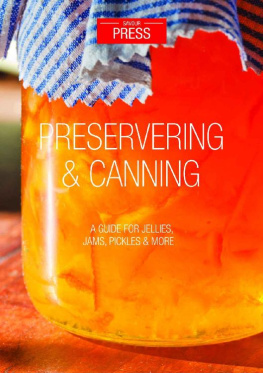

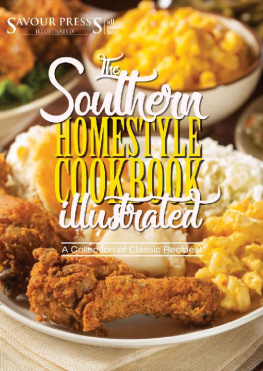
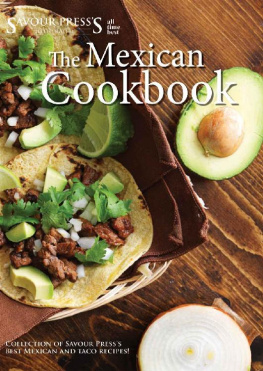
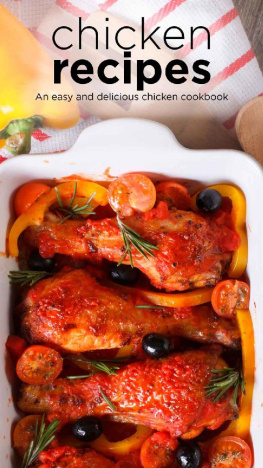

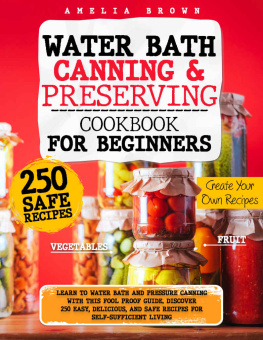

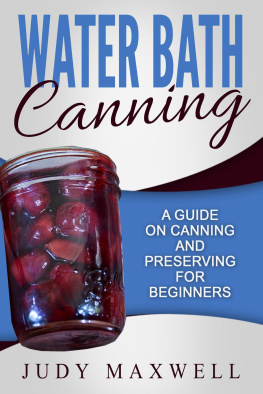
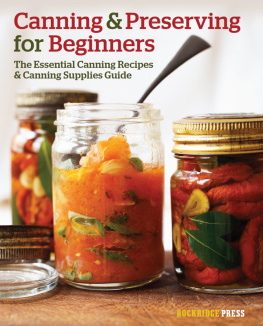

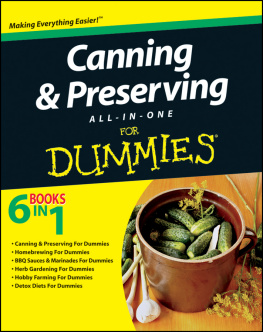
 Jam, Jelly & Preserve Recipes U NIQUELY S WEET & S AVOURY J AM , J ELLY & P RESERVE R ECIPES By Savour Press Copyright by Wentworth Publishing House All rights reserved Published by Savour Press, a DBA of Wentworth Publishing House Lets get it started! Welcome to Savour. Like everyone who wants to cook up the best dishes to please picky eaters in your home, we sometimes resort to buying readymade food items that we can reheat or microwave when the need arises. But the prices of precooked foods keep on increasing, and you are unsure if they are prepared in a clean kitchen. Your familys health is at stake, why not go back to the basic, and enjoy cooking to the fullest. Our mantra is to teach you the basics of cooking with whatever methods that you can prepare healthy and delicious menus for your family and for special occasions. This is why we have come up with this cookbook filled with our collection of 40 best jam, jelly, and preserve recipes for you to start with, so that your dining habits will be memorable and enjoyable.
Jam, Jelly & Preserve Recipes U NIQUELY S WEET & S AVOURY J AM , J ELLY & P RESERVE R ECIPES By Savour Press Copyright by Wentworth Publishing House All rights reserved Published by Savour Press, a DBA of Wentworth Publishing House Lets get it started! Welcome to Savour. Like everyone who wants to cook up the best dishes to please picky eaters in your home, we sometimes resort to buying readymade food items that we can reheat or microwave when the need arises. But the prices of precooked foods keep on increasing, and you are unsure if they are prepared in a clean kitchen. Your familys health is at stake, why not go back to the basic, and enjoy cooking to the fullest. Our mantra is to teach you the basics of cooking with whatever methods that you can prepare healthy and delicious menus for your family and for special occasions. This is why we have come up with this cookbook filled with our collection of 40 best jam, jelly, and preserve recipes for you to start with, so that your dining habits will be memorable and enjoyable. VISIT US AT www.savourypress.co m Also, by the editors at Savour Presss kitchen The Chili Cookbook The Quiche Cookbook Indian Instant Pot Cookbook The Cajun and Creole Cookbook The Grill Cookbook The Burger Book The Ultimate Appetizers Cookbook The West African Cookbook Korean Seoul Cookbook The Cast Iron Cookbook The Holiday Cookbook The Baking Book The Crepe Cookbook JOIN THE SAVOUR PRESSS READERS CLUB AND RECEIVE A FREE COOKBOOK! JUST STAY UNTIL THE END OF THE BOOK AND CLICK ON THE BOOK OR LINK!
VISIT US AT www.savourypress.co m Also, by the editors at Savour Presss kitchen The Chili Cookbook The Quiche Cookbook Indian Instant Pot Cookbook The Cajun and Creole Cookbook The Grill Cookbook The Burger Book The Ultimate Appetizers Cookbook The West African Cookbook Korean Seoul Cookbook The Cast Iron Cookbook The Holiday Cookbook The Baking Book The Crepe Cookbook JOIN THE SAVOUR PRESSS READERS CLUB AND RECEIVE A FREE COOKBOOK! JUST STAY UNTIL THE END OF THE BOOK AND CLICK ON THE BOOK OR LINK!  Copyright 2018 by Savour Press All rights reserved. No part of this publication may be reproduced, distributed, or transmitted in any form or by any means, including photocopying, recording, or other electronic or mechanical methods, without the prior written permission of the publisher, except in the case of brief quotations embodied in critical reviews and certain other noncommercial uses permitted by copyright law. Contents
Copyright 2018 by Savour Press All rights reserved. No part of this publication may be reproduced, distributed, or transmitted in any form or by any means, including photocopying, recording, or other electronic or mechanical methods, without the prior written permission of the publisher, except in the case of brief quotations embodied in critical reviews and certain other noncommercial uses permitted by copyright law. Contents